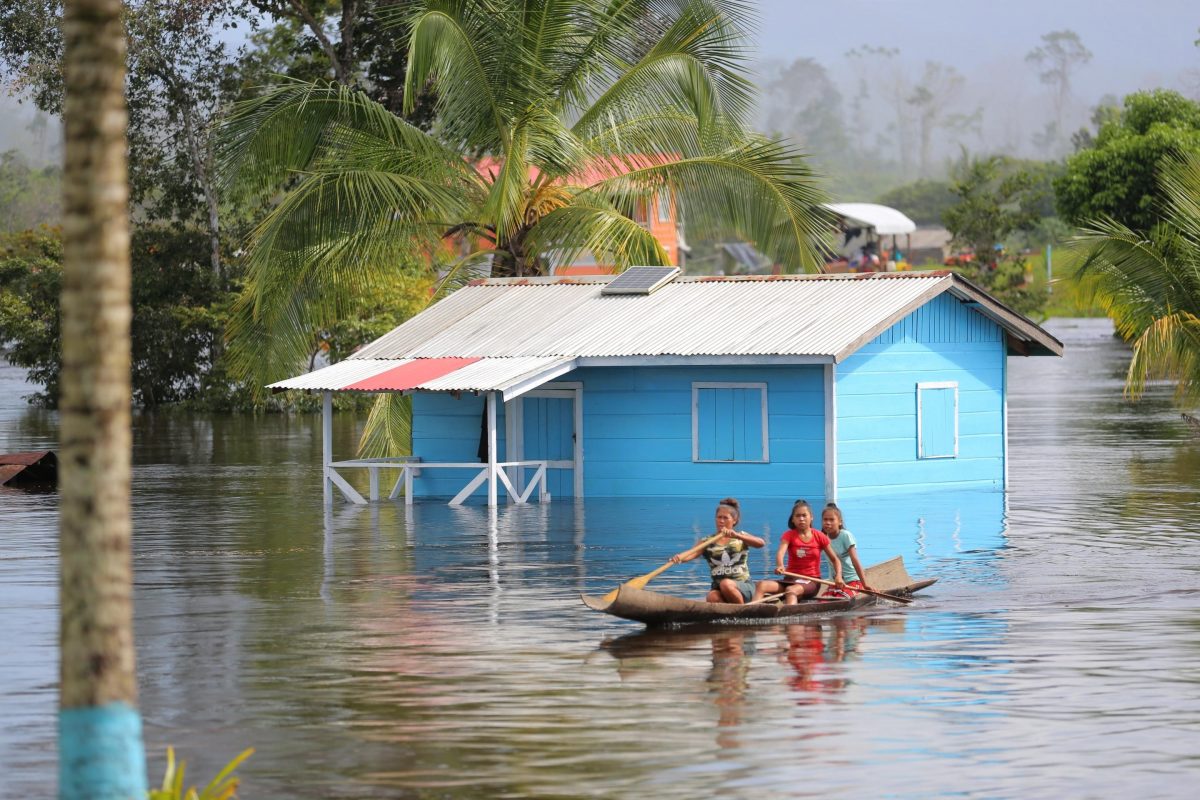The Civil Defence Commission (CDC) today said that it had dispatched additional supplies for distribution to flood-affected residents in Region Seven (Cuyuni-Mazaruni) communities.
The CDC team dispatched a total of 800 Food and Cleaning Hampers, 200 pairs of Long Boots, 2 Drums of Gasoline (45 gal), 500 Mosquito Nets, 10 Tarpaulins and a quantity of Face Masks and Water Purification Tablets.
This followed an extensive assessment of the affected areas recently, the CDC said in a release today.
In Waramadong, over 200 farms have been impacted, five houses are flooded and residents have been relocated to higher ground. Residents said that there is a shortage of cleaning supplies, medicine and chlorine tablets. In Jawalla, over 150 farms and over 60 households have been affected, with seven families being relocated to safer living quarters. One house was reported to have collapsed due to the floodwaters. Quebanang, another village in the Region, has a total of 86 affected households, the CDC said. Additionally, five government buildings are inundated. In Kako, 120 farms and 12 houses have been flooded. Residents who are concerned about water-borne diseases have requested mosquito nets, rain boots and water tanks.
An assessment of Chinoweng and Wax Creek found that 132 farms and 98 farms, respectively, were destroyed by floodwaters, the CDC said. However, no family was required to be relocated. In Abbou, a small mining community in the Region, three houses were flooded but no residents had to be relocated. In other mining areas such as Imbaimadai, Ominik and Kambora, at least 20 mining camps have been flooded, forcing miners to move to higher ground, the CDC said. Several pieces of equipment were damaged and fuel and rations destroyed in floodwaters. Additionally, 11 homes were flooded while farming communities suffered major losses. In Kamarang, 15 households were flooded with 71 farms destroyed. Institutions including schools, churches and multi-purpose halls have been identified as possible shelters should the need arise, the CDC said.






